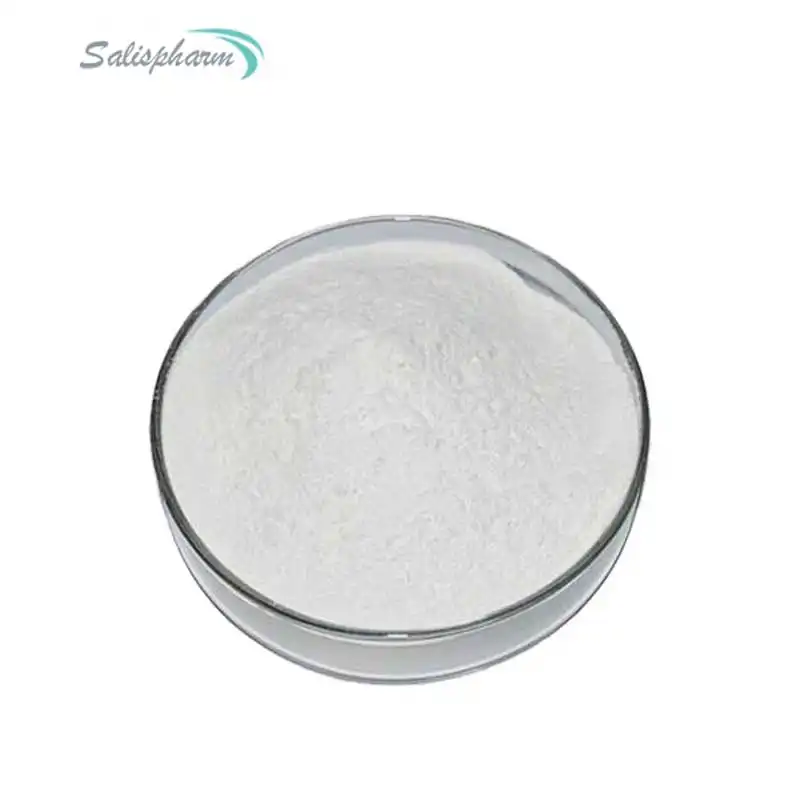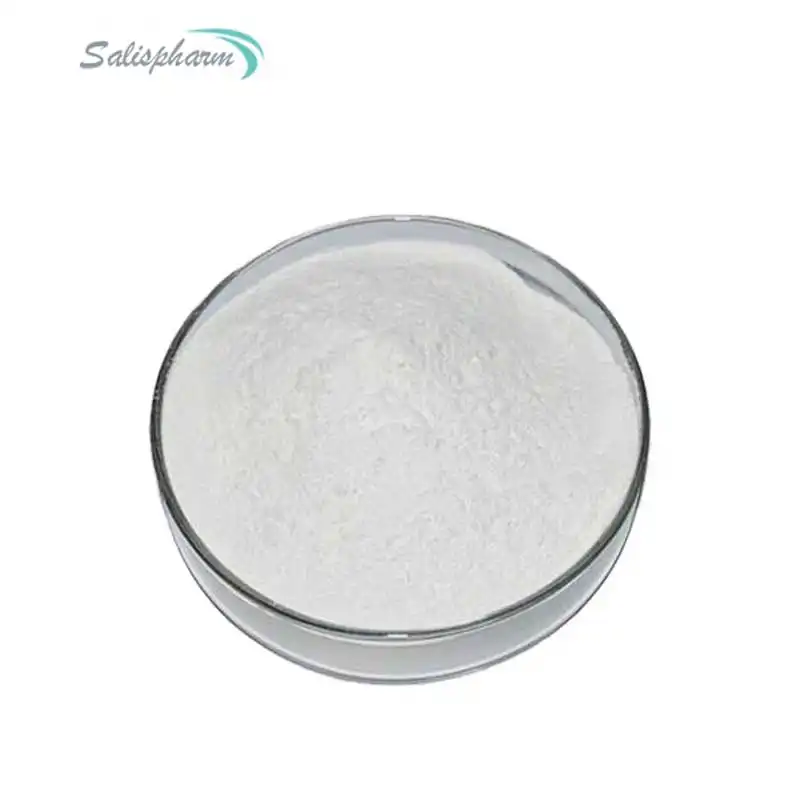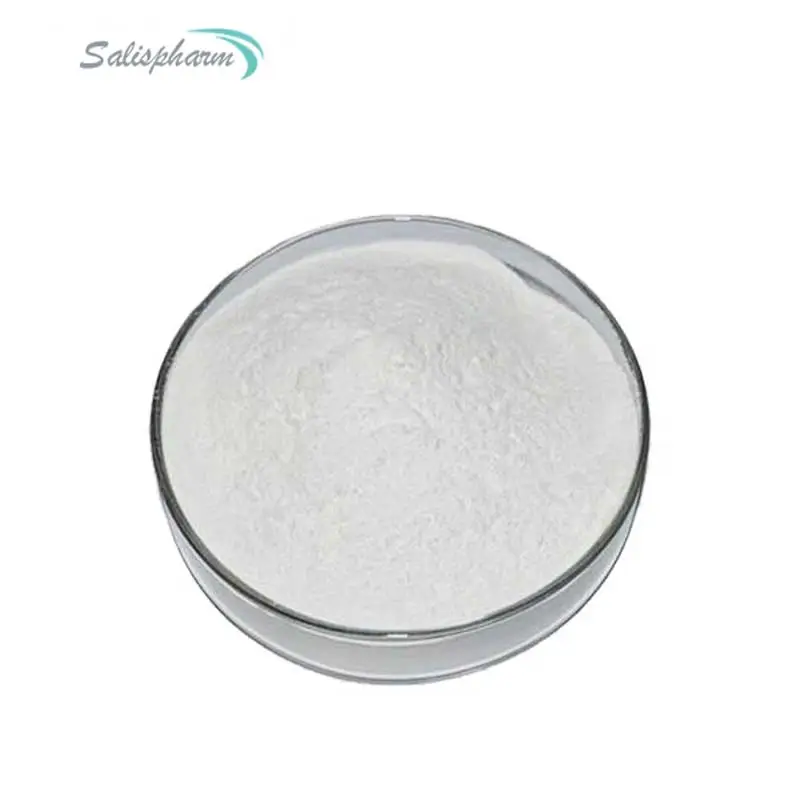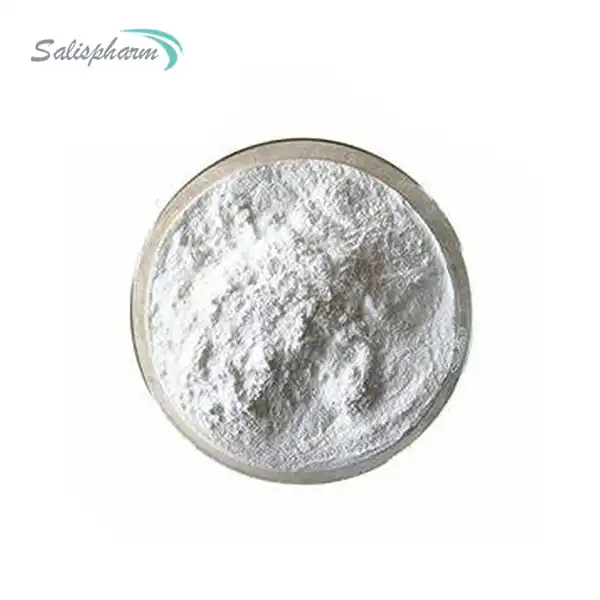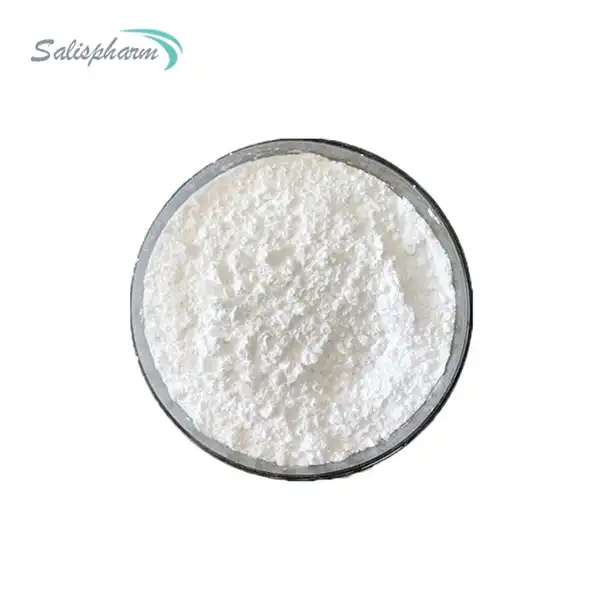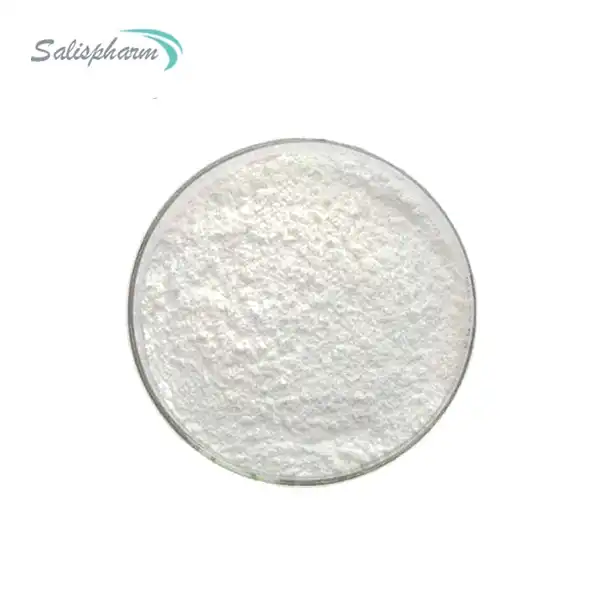Tadalafil powder is a potent medication primarily used to treat erectile dysfunction (ED) and benign prostatic hyperplasia (BPH). As a member of the phosphodiesterase type 5 (PDE5) inhibitor class, tadalafil works by enhancing the body's natural response to sexual stimulation. Understanding how this medication functions within the body is crucial for both patients and healthcare providers. In this blog post, we'll explore the mechanism of action of tadalafil powder and answer some commonly asked questions about its use and effects.
What is the difference between tadalafil and sildenafil powder?
While tadalafil and sildenafil are both PDE5 inhibitors used to treat erectile dysfunction, they have several key differences that set them apart. Understanding these differences can help patients and healthcare providers make informed decisions about which medication might be most suitable for individual needs.
The most notable difference between tadalafil and sildenafil is their duration of action. Tadalafil is often referred to as the "weekend pill" due to its long-lasting effects, which can persist for up to 36 hours. This extended duration allows for more spontaneity in sexual activity, as the medication doesn't need to be timed as precisely with intimate moments. In contrast, sildenafil typically remains effective for about 4-5 hours, requiring more careful timing of doses relative to sexual activity.
The onset of action also differs between these two medications. Tadalafil generally starts working within 30 minutes to an hour after ingestion, with some patients reporting effects as early as 16 minutes after taking the medication. Sildenafil, on the other hand, usually takes effect within 30-60 minutes. This slight difference in onset time can influence a patient's choice based on their lifestyle and preferences.
Another significant difference lies in the impact of food on the medications' effectiveness. Tadalafil's absorption and effectiveness are not significantly affected by food intake, allowing for greater flexibility in when it can be taken relative to meals. Sildenafil, however, may have delayed absorption and reduced effectiveness when taken with a high-fat meal, which can impact its onset of action and overall efficacy.
The dosing regimens for tadalafil and sildenafil also differ. Tadalafil is available in both daily low-dose formulations (2.5 mg or 5 mg) and as-needed higher doses (10 mg or 20 mg). The daily low-dose option can be particularly beneficial for men who engage in sexual activity more than twice a week, as it maintains a steady level of the drug in the system. Sildenafil is typically prescribed on an as-needed basis, with doses ranging from 25 mg to 100 mg.
How long does it take for tadalafil powder to work?
The time it takes for tadalafil powder to work is a crucial factor for many users, as it impacts the planning and spontaneity of sexual activity. Understanding the onset of action, peak effectiveness, and duration of tadalafil's effects can help users maximize the benefits of this medication.
Tadalafil typically begins to work within 30 minutes to an hour after ingestion. However, some individuals have reported noticeable effects as early as 16 minutes after taking the medication. It's important to note that these times can vary based on individual factors such as metabolism, overall health, and the presence of food in the stomach.
The onset of action for tadalafil is generally considered to be faster than some other PDE5 inhibitors. This relatively quick onset is due to tadalafil's efficient absorption in the gastrointestinal tract. Once absorbed, it rapidly enters the bloodstream and begins to inhibit the PDE5 enzyme, leading to increased levels of cyclic guanosine monophosphate (cGMP) in the corpus cavernosum of the penis.
While tadalafil starts working within this timeframe, it's crucial to understand that sexual stimulation is still necessary for the medication to be effective. Tadalafil enhances the natural physiological processes that lead to an erection; it does not automatically cause an erection without sexual arousal.
The peak plasma concentration of tadalafil is typically reached about 2 hours after ingestion. This means that while the medication begins working earlier, its maximum effectiveness is generally achieved around this 2-hour mark. However, the high bioavailability and long half-life of tadalafil mean that effective concentrations are maintained in the bloodstream for an extended period.
One of tadalafil's most notable characteristics is its long duration of action. Unlike some other ED medications that remain effective for 4-5 hours, tadalafil can continue to work for up to 36 hours after taking a single dose. This prolonged effectiveness has earned tadalafil the nickname "the weekend pill," as a single dose taken on Friday evening could potentially allow for spontaneous sexual activity throughout the weekend.
It's important to note that the duration of action doesn't mean a continuous erection for 36 hours. Instead, it indicates the window during which the medication can help achieve and maintain an erection when sexually stimulated. This extended timeframe can reduce the pressure of timing sexual activity around medication intake, allowing for more natural and spontaneous intimacy.
The long half-life of tadalafil, approximately 17.5 hours, contributes to its extended duration of action. This means that half of the drug is eliminated from the body after about 17.5 hours, but sufficient levels remain to continue providing therapeutic effects for a longer period.
For individuals taking daily low-dose tadalafil (2.5 mg or 5 mg), the medication maintains a steady state in the body after about 5 days of continuous use. In this case, the onset of action becomes less relevant as the drug is consistently present in the system, allowing for spontaneous sexual activity at any time.
Factors that can influence how quickly tadalafil works include:
1. Food intake: Unlike some other PDE5 inhibitors, tadalafil's absorption is not significantly affected by food. This means it can be taken with or without meals without substantially impacting its onset of action.
2. Alcohol consumption: While moderate alcohol consumption doesn't significantly affect tadalafil's efficacy, excessive alcohol intake can impact sexual performance regardless of medication use.
3. Overall health: Individuals with certain health conditions or those taking specific medications may experience a delayed onset of action or reduced effectiveness.
4. Age: Older individuals may metabolize tadalafil more slowly, which can affect both the onset and duration of action.
5. Dosage: Higher doses may have a quicker onset of action, but this should always be determined by a healthcare provider.
What are the benefits of using tadalafil powder for erectile dysfunction?
Tadalafil powder has gained significant popularity as a treatment for erectile dysfunction (ED) due to its numerous benefits. Understanding these advantages can help individuals and healthcare providers make informed decisions about ED treatment options. Let's explore the key benefits of using tadalafil powder for erectile dysfunction in detail.
One of the most significant benefits of tadalafil is its long duration of action. Often referred to as the "weekend pill," tadalafil can remain effective for up to 36 hours after a single dose. This extended window of effectiveness sets it apart from other ED medications and offers several advantages:
1. Spontaneity: The long-lasting effect allows for more spontaneous sexual activity without the need to time medication intake precisely. This can lead to a more natural and relaxed approach to intimacy, reducing anxiety and pressure associated with performance.
2. Flexibility: Users have a wider timeframe to engage in sexual activity, which can be particularly beneficial for couples with varying schedules or those who prefer not to plan their intimate moments rigidly.
3. Reduced dosing frequency: For many users, a single dose can provide coverage for multiple days, potentially reducing the overall number of doses needed compared to shorter-acting alternatives.
Another key benefit of tadalafil is its availability in daily low-dose formulations. This dosing option offers unique advantages:
1. Continuous coverage: Daily low-dose tadalafil (2.5 mg or 5 mg) maintains a steady state in the body, allowing for spontaneous sexual activity at any time without the need for pre-planning or timing doses.
2. Potential for fewer side effects: Lower daily doses may result in a reduced incidence of side effects compared to higher as-needed doses.
3. Treatment of concurrent conditions: Daily tadalafil can also help manage symptoms of benign prostatic hyperplasia (BPH), providing dual benefits for men experiencing both ED and BPH.
Tadalafil's effectiveness is another significant benefit. Clinical studies have shown high success rates in improving erectile function across a wide range of ED severities and etiologies. Some key points regarding its effectiveness include:
1. Broad efficacy: Tadalafil has demonstrated effectiveness in various populations, including those with diabetes, cardiovascular disease, and post-prostatectomy ED.
2. Improved confidence: Successful treatment with tadalafil can lead to increased confidence in sexual performance, which can have positive effects on overall quality of life and relationships.
3. Reliable results: Many users report consistent and predictable responses to tadalafil, which can reduce anxiety related to sexual performance.
The convenience of tadalafil use is another notable benefit:
1. Food independence: Unlike some other ED medications, tadalafil's absorption and effectiveness are not significantly affected by food intake. This allows for greater flexibility in when the medication can be taken relative to meals.
2. Alcohol compatibility: While excessive alcohol should be avoided, moderate alcohol consumption does not significantly impact tadalafil's efficacy, offering more lifestyle flexibility compared to some alternatives.
3. Easy administration: Tadalafil powder can be easily dissolved in water or other beverages, making it a convenient option for those who have difficulty swallowing pills.
Tadalafil also offers benefits in terms of its side effect profile:
1. Generally well-tolerated: Most users experience mild side effects, if any, with common effects being headache, back pain, and muscle aches.
2. Reduced vision-related side effects: Compared to some other PDE5 inhibitors, tadalafil has a lower incidence of vision-related side effects due to its higher selectivity for PDE5 over PDE6.
3. Cardiovascular safety: Extensive studies have shown tadalafil to have a favorable cardiovascular safety profile when used as directed.
The versatility of tadalafil is another significant benefit:
1. Multiple indications: Beyond ED, tadalafil is approved for treating benign prostatic hyperplasia and pulmonary arterial hypertension, making it a versatile medication for some patients with multiple conditions.
2. Psychological benefits: The confidence gained from successful ED treatment can have positive effects on overall mental health and well-being.
3. Relationship improvements: Effective management of ED can lead to improved intimacy and relationship satisfaction for both partners.
Lastly, the availability of generic tadalafil has brought about economic benefits:
1. Cost-effectiveness: Generic versions have significantly reduced the cost of treatment, making it more accessible to a broader range of patients.
2. Insurance coverage: Many insurance plans now cover generic tadalafil, further reducing out-of-pocket expenses for patients.
In conclusion, tadalafil powder offers a range of benefits for individuals with erectile dysfunction, including long duration of action, flexibility in use, high effectiveness, convenience, a favorable side effect profile, versatility in treating multiple conditions, and improved affordability with generic options. These advantages make tadalafil a popular and effective choice for many men seeking to manage ED and improve their sexual health and overall quality of life.
If you are also interested in this product and want to know more product details, or want to know about other related products, please feel free to contact iceyqiang@aliyun.com.
References
1. Coward, R. M., & Carson, C. C. (2008). Tadalafil in the treatment of erectile dysfunction. Therapeutics and Clinical Risk Management, 4(6), 1315-1330.
2. Porst, H., Padma-Nathan, H., Giuliano, F., Anglin, G., Varanese, L., & Rosen, R. (2003). Efficacy of tadalafil for the treatment of erectile dysfunction at 24 and 36 hours after dosing: a randomized controlled trial. Urology, 62(1), 121-125.
3. Brock, G. B., McMahon, C. G., Chen, K. K., Costigan, T., Shen, W., Watkins, V., ... & Whitaker, S. (2002). Efficacy and safety of tadalafil for the treatment of erectile dysfunction: results of integrated analyses. The Journal of Urology, 168(4), 1332-1336.
4. Seftel, A. D., Farber, J., Fletcher, J., Deeley, M. C., Elion-Mboussa, A., & Hoover, A. (2005). A three-part study to investigate the incidence and potential etiologies of tadalafil-associated back pain or myalgia. International Journal of Impotence Research, 17(5), 455-461.
5. Doggrell, S. A. (2005). Comparison of clinical trials with sildenafil, vardenafil and tadalafil in erectile dysfunction. Expert Opinion on Pharmacotherapy, 6(1), 75-84.
6. Montorsi, F., Brock, G., Stolzenburg, J. U., Mulhall, J., Moncada, I., Patel, H. R., ... & Sievert, K. D. (2014). Effects of tadalafil treatment on erectile function recovery following bilateral nerve‐sparing radical prostatectomy: a randomised placebo‐controlled study (REACTT). European Urology, 65(3), 587-596.
7. Giuliano, F., Lamb, J., Crossland, A., Haughie, S., Ellis, P., & Tamimi, N. A. (2010). A placebo-controlled trial of tadalafil once daily in the management of men with lower urinary tract symptoms (LUTS) suggestive of benign prostatic hyperplasia (BPH). BJU International, 106(10), 1451-1457.




